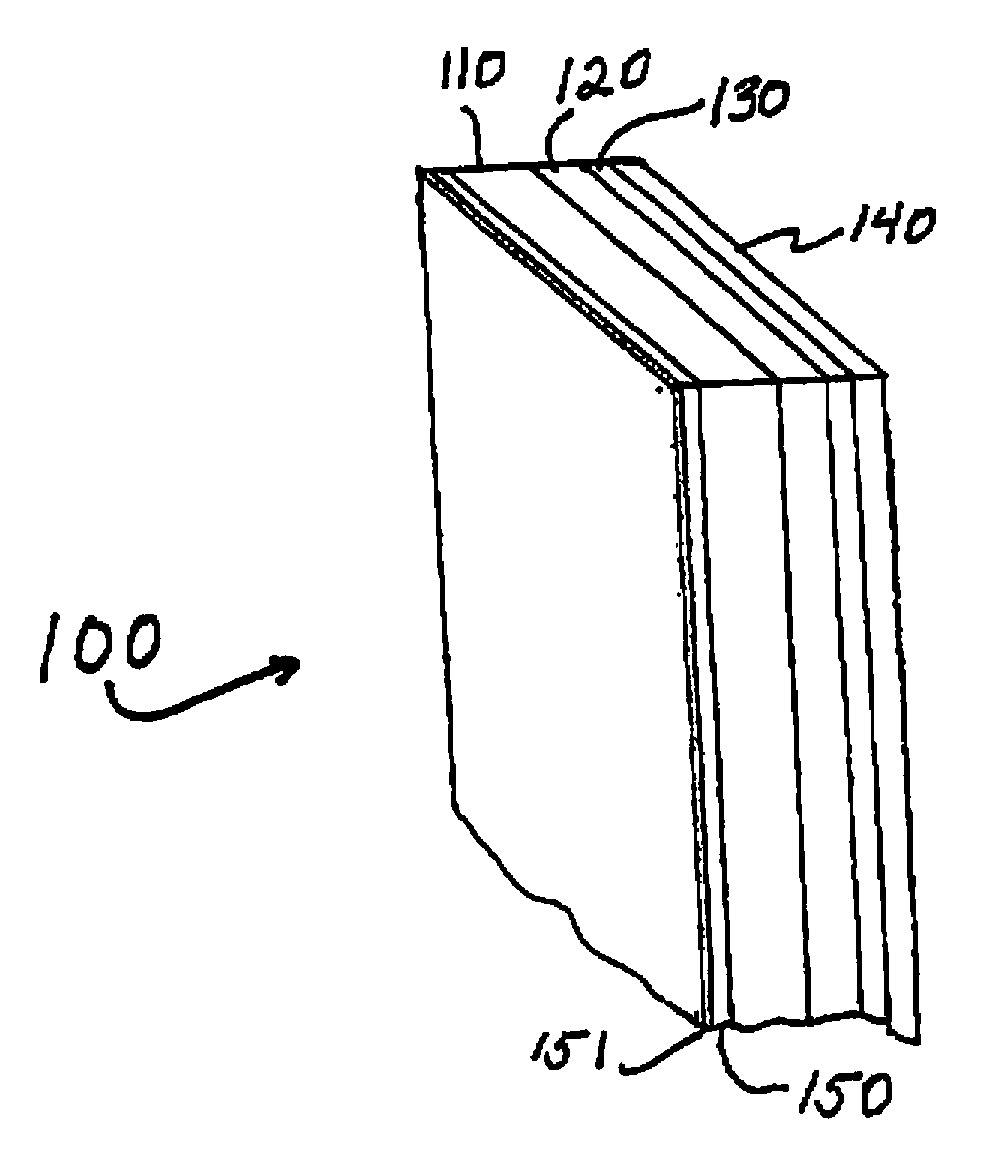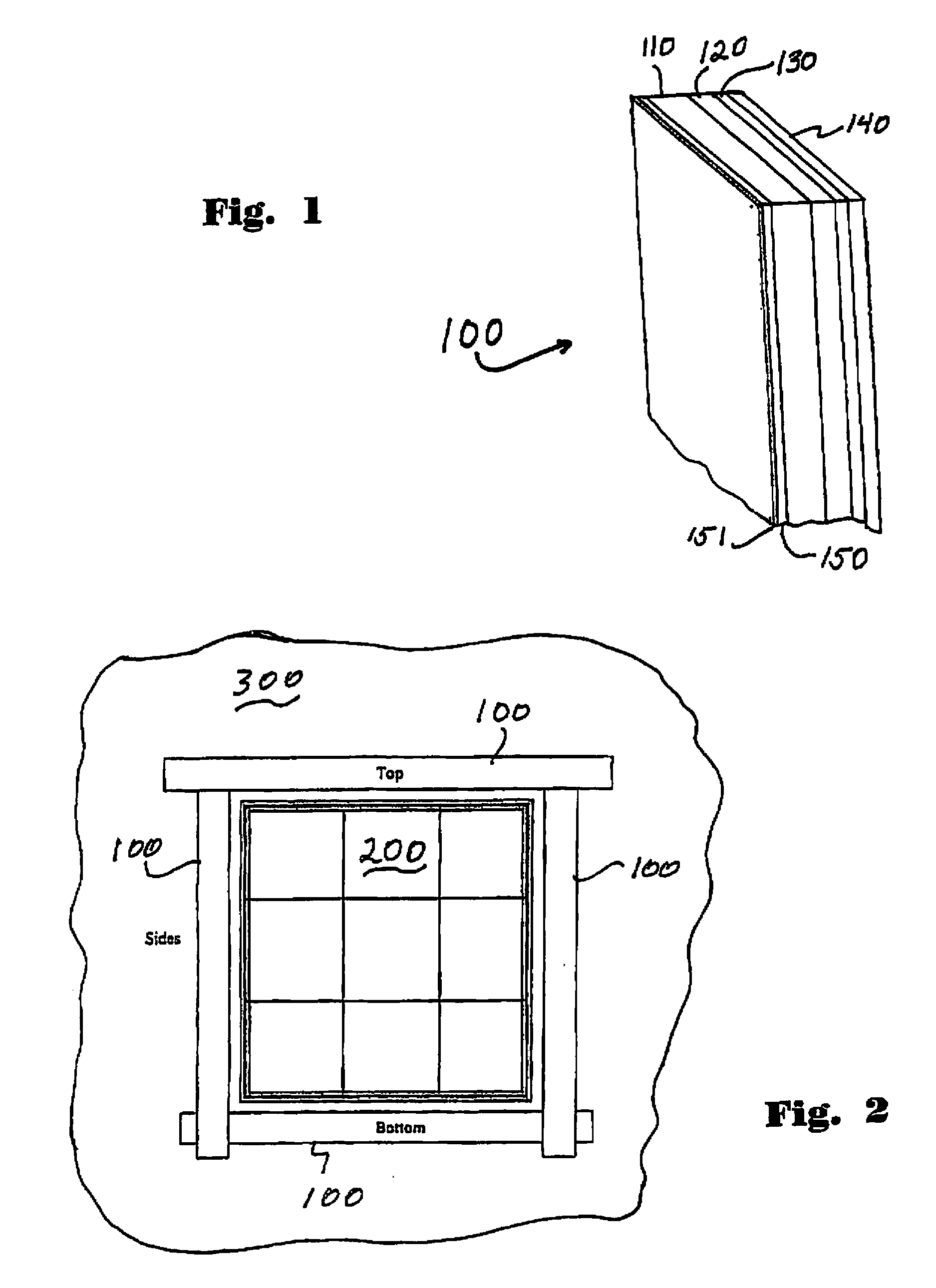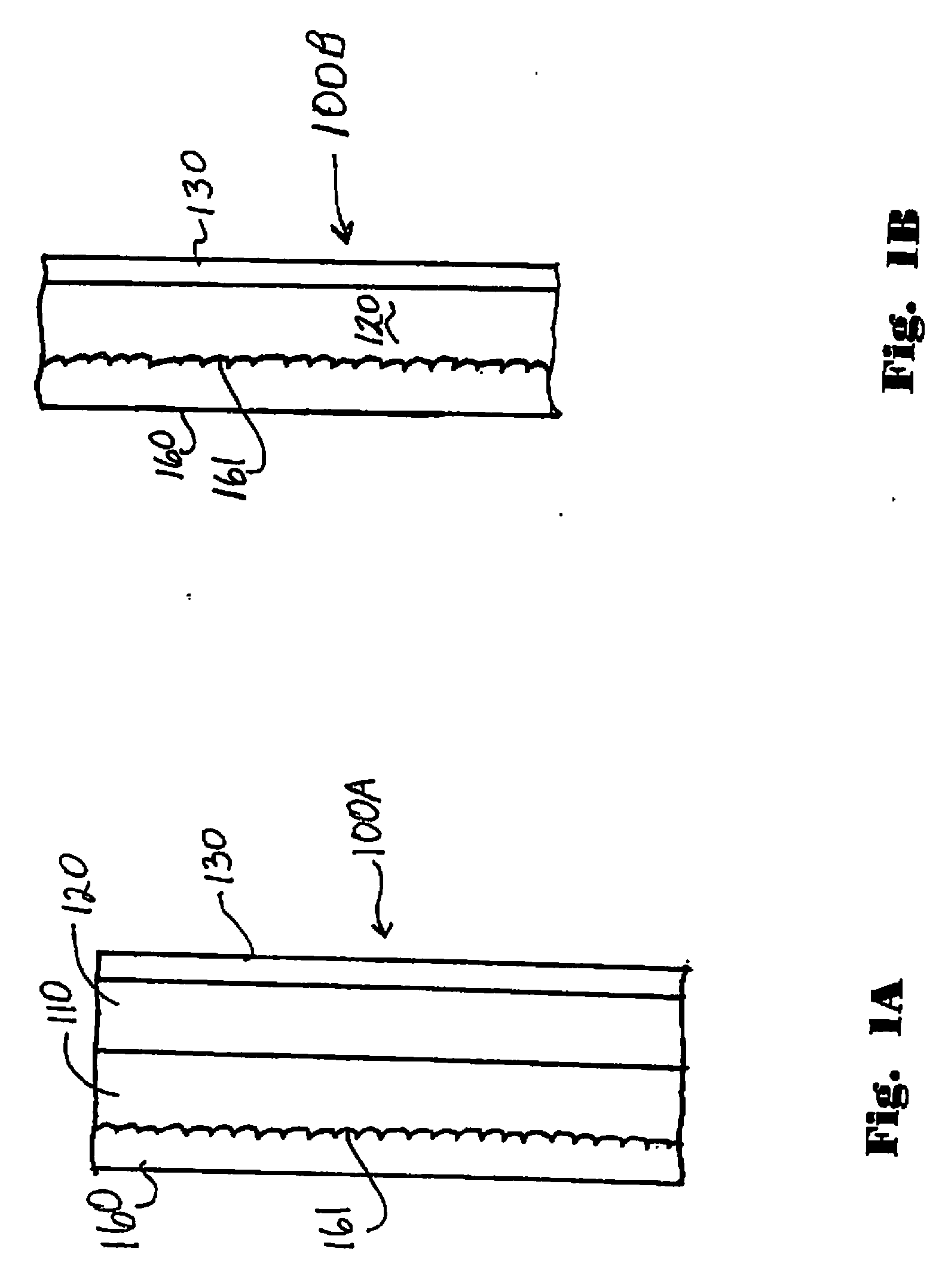Flashing tape
a flashing tape and tape technology, applied in the field of flashing tape, can solve the problems of damage to the health of the occupants of the building, damage to the occupants' health, and deterioration of wood, and achieve the effect of sufficient sealant compatibility
- Summary
- Abstract
- Description
- Claims
- Application Information
AI Technical Summary
Benefits of technology
Problems solved by technology
Method used
Image
Examples
example 1
[0051]In accordance with a modified ASTM E2273-03 test method the flashing tape of the present invention was tested for drainage rate of water shed off building trim and cladding and comes into contact with the flashing tape. The flashing tape is installed over a nailing fin. A clear polyacrylic plate is disposed over the flashing tape to simulate the installation of cladding and trim boards. The rate of drain is calculated by measuring the weight of water passing between the flashing tape and polyacrylic plate over a period of time. Table 1 below sets forth the drainage rate results for samples of the flashing tape of the invention and comparison tapes (which are not in accord with the invention). Each of the tape samples was four inches in width and of the same length.
[0052]The flashing tape of the invention identified in Table 2 as Tape #1, included a 10 mil thick nonporous polyethylene face sheet coextruded with a cross linked closed cell polyethylene foam. The polyethylene face...
example 2
[0057]Pursuant to AAMA 711-07 Voluntary Specification For Self Adhering Flashing Used For Installation Of Exterior Wall Fenestration Products the flashing tape of the invention was tested for adherence to minimum performance requirements. The specific methods and associated results are set forth below in Table 3.
TABLE 3AAMA 711-07Test Method and Minimum RequirementsTest Results5.1Tensile Strength Machine Direction per ASTM15.4 lbsD 5034 at 73° F. and 50% RH Minimum Value2.9 lbs / inch5.2Water Penetration Resistance Around Nails perNo water foundASTM D 1970-01 Sec 7.9 Procedure Minimum31 mm(1.2 in) water5.3Peel Adhesion per ASTM D 3330, Method F,As Described in Sections 4.6 and 16.0 of thatMethod5.3.224 hr dwell at 73° F. / 50% RH Minimum Peel4.75 lb / linear Value 0.26 N / mm (1.5 lb / in) OSBinch5.3.224 hr dwell at 73° F. / 50% RH Minimum Peel4.3 lb / linear Value 0.26 N / mm (1.5 lb / in) Plywoodinch5.3.224 hr dwell at 73° F. / 50% RH Minimum Peel4.4 lb / linear Value 0.26 N / mm (1.5 lb / in) Anodizedinch...
PUM
| Property | Measurement | Unit |
|---|---|---|
| height | aaaaa | aaaaa |
| distance | aaaaa | aaaaa |
| thickness | aaaaa | aaaaa |
Abstract
Description
Claims
Application Information
 Login to View More
Login to View More - R&D
- Intellectual Property
- Life Sciences
- Materials
- Tech Scout
- Unparalleled Data Quality
- Higher Quality Content
- 60% Fewer Hallucinations
Browse by: Latest US Patents, China's latest patents, Technical Efficacy Thesaurus, Application Domain, Technology Topic, Popular Technical Reports.
© 2025 PatSnap. All rights reserved.Legal|Privacy policy|Modern Slavery Act Transparency Statement|Sitemap|About US| Contact US: help@patsnap.com



